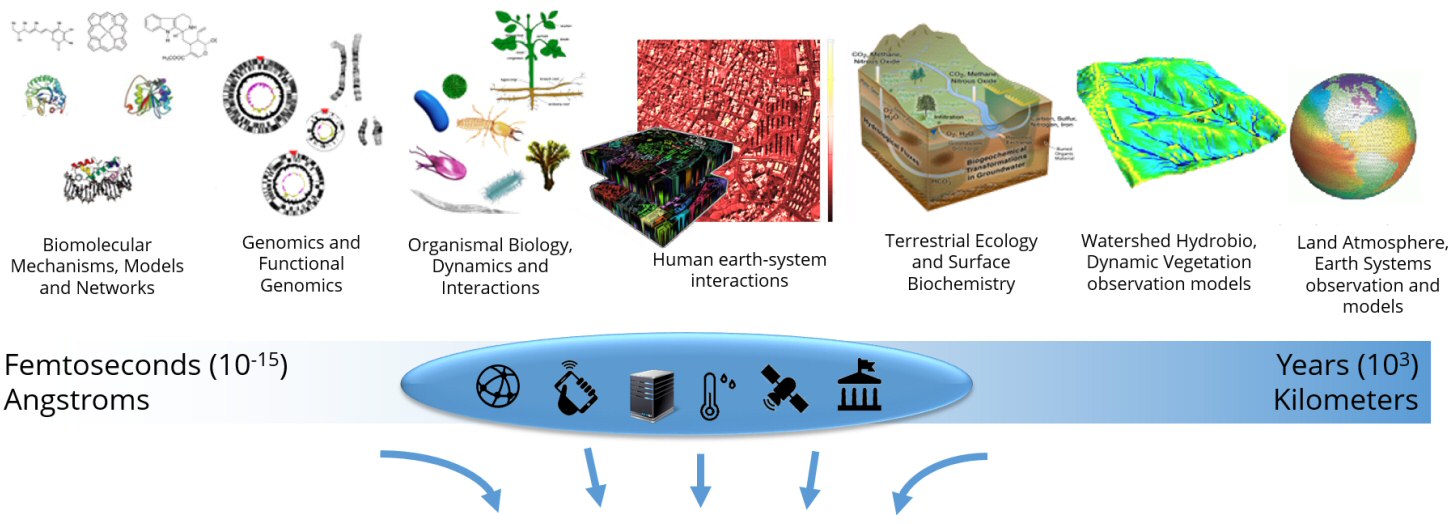Earth Energy Monitoring System (E2MS)
Understanding Earth Energy
Our planet is a large system of systems and understanding the flows in and between the many systems provides an avenue to explaining the nature and working of these systems and the planet as a whole. The systems range from individual organisms, communities, and ecosystems to continents, oceans, and the atmosphere. Major flows in the Earth system include the mass flows that are crucial for the biosphere, such as the carbon, oxygen, water, nitrogen, phosphorous, and methane. Energy flows from the sun into the atmosphere, oceans, and land areas. Within Energy is continuously redistributed through atmosphere and ocean circulation.
Within the Earth system, it melts snow and ice and warms the ocean, lakes and rivers, and it drives much of the dynamics we notice as weather, seasons, climate, and ocean circulation. The energy coming from the sun also enables plants to grow and produce biomass. Eventually some of the biomass is covered by soil and the inherent energy is stored in the ground; a slow processes that nevertheless over millions years produces large energy reservoirs. Flows of thermal energy produced by radioactive decay deep in the inner of the globe pushes tectonic plates, forming oceans and mountains, creates volcanoes and shakes the Earth.
The Earth system has emergent properties. Exploring this requires access to layers of flows* of data and their interactions coupled across at least 18 orders of magnitude in scale
Earth Energy Monitoring requires the capacity to know which spatiotemporal scales are relevant in an evolving, non-stationary system
